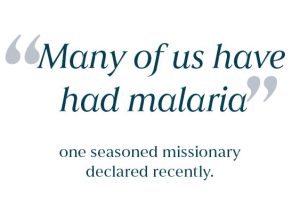Update on Malaria
 What is malaria and how do you get it?
What is malaria and how do you get it?
Malaria is a life-threatening disease, usually spread to humans by some types of mosquitoes. It is mostly found in tropical countries. It is preventable and curable. The infection is caused by a parasite and does not spread from person to person. Symptoms can be mild or life-threatening. Mild symptoms are fever, chills and headache. Severe symptoms include fatigue, confusion, seizures, and difficulty breathing. Infants, children under 5 years of age, pregnant women, travellers and people with HIV/AIDS are at higher risk of severe infection.
Malaria can be prevented by avoiding mosquito bites and with medicines. Treatments can stop mild cases from getting worse.
The 2023 World Malaria Report, published by WHO, examined the link between climate change and malaria. Changes in temperature, humidity and rainfall can influence the behaviour and survival of the malaria-carrying Anopheles mosquito. Extreme weather events, such as heatwaves and flooding, can also directly impact transmission and disease burden. Catastrophic flooding in Pakistan in 2022, for example, led to a five-fold increase in malaria cases in the country.
The disease burden is felt highest in Africa. In 2022, Africa was home to about 94% of all malaria cases and 95% of deaths. Children under 5 years of age accounted for about 78% of all malaria deaths in African countries. The number of infections worldwide was slightly higher in 2023 than 2022.
Why are things not getting better?
Progress in malaria control is threatened by emerging resistance to insecticides among Anopheles mosquitoes. These insecticides are used on mosquito nets and for indoor spraying. Other threats include insufficient access to treated nets due to the stresses of day-to-day life outpacing replacement, and changing behaviour of mosquitoes, which appear to be biting early before people go to bed and resting outdoors, thereby evading exposure to insecticides.
Signs of hope
Two new anti-malaria vaccines are being tried out for young children. Preliminary results show great promise, but a good public health system needs to be in place to make any change long-lasting. Often this is difficult in conflict torn areas such as Niger, Sudan and the Democratic Republic of Congo.
